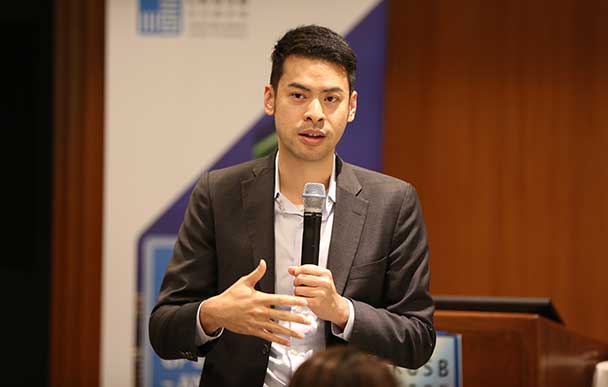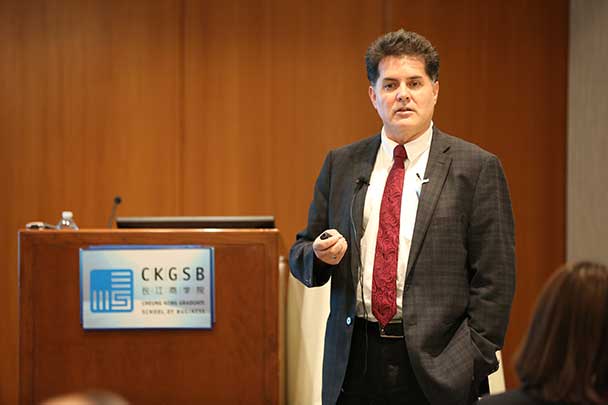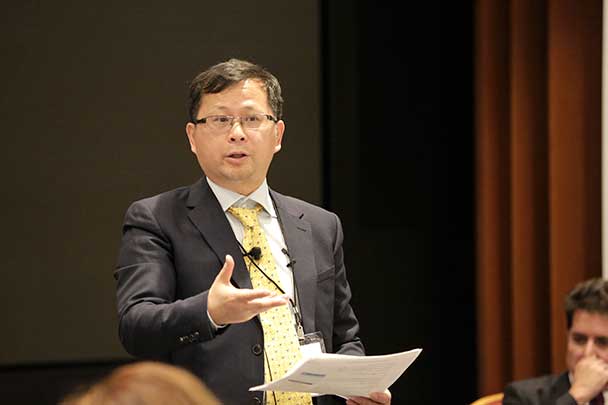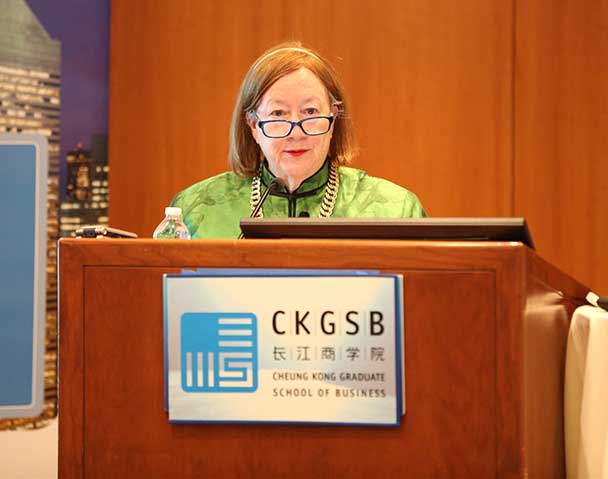China’s emergence as a globalization leaders makes it an important player

China’s investments and interest in Latin America is providing the region the essential assets it needs for economic growth, said a panel of experts at a recent CKGSB Knowledge Series.
“China has been closing the gaps that have limited our growth,” said Arnoldo Camacho, Professor of Finance and Quantitative Methods at INCAE Business School.
Dr. Camacho was a featured speaker at CKGSB Knowledge Series titled “Finance Dialogue Between Latin America & China,” which analyzed China’s growing trade and investment in Latin America. This event, held in New York City, was organized in partnership with INCAE Business School. Mary Wadsworth Darby, Chief Representative of CKGSB-Americas moderated the panel comprising of Dr. Camacho; and Huining (Henry) Cao, Professor of Finance, Faculty Director of the Finance MBA Program and Director of Business Research Institute at CKGSB.
The “gaps” that Dr. Camacho referred to include providing financing to the region for development and investment. Since 2010, China has been the largest and most significant source of financing to Latin America. Dr. Camacho’s presentation showed that China’s funding to the region far outpaced the financing provided by the World Bank, the Inter-American Development Bank (IDB), and the Development Bank of Latin America (CAF).

Dr. Camacho and Dr. Cao said that China and Latin America share synergies that drives their partnership; namely, China has reached the level of economic and capital development that it now must focus on boosting domestic consumption and services for economic stability; Latin America, on the other hand, can tap into China excess capital and expertise for investment in the region to develop human capital, infrastructure and to advance the region’s economies to reach value-add chain from its resources.
Latin America would continue to provide raw material to China, though that supply would increasingly be geared for consumers’ consumption; and Latin America would be a suitable destination to invest China’s excess savings and capital.
Dr. Camacho devoted a significant part of his presentation explaining the divergent strategies that China and Latin America pursued and how China’s strategies helped it to develop more effectively and become an economic powerhouse.
“Twenty-five years ago, China and Latin America were in similar situation: Latin America and China were very attractive economies in terms of growth potential and the quality of investment opportunities.”,” Dr. Camacho said. “Today, China is the engine of global economy but Latin America regressed.”
Dr. Camacho said the disparity in “choice of strategies” by leaders resulted in China’s success and Latin America’s stagnation. Whereas China invested in developing infrastructure and human capital, and tapped into its resources to develop value chain — turning raw material into finished goods for export – Latin American economies largely focused on exporting their abundant resources to industrialized or industrializing nations, including China. In the short-term, Latin America achieved greater employment and stability but did not create the essentials for long-term economic benefits in terms of increased efficiency in the use of resources, or ‘total productivity.’ As a result, Dr. Camacho said, the region has been “stuck in middle income” bracket.
“Commodity-based trade did not offer the opportunity to take advantage on the investment made in human capital,” he said in his presentation. “The focus on commodity-based trade allows a thrust in growth which has come to a significant slowdown in recent years, and well below the estimated potential of 7 to 10% in nearly all Latin American economies.”

Dr. Cao said China’s investment and partnership in Latin America has become particularly critical because of China’s new role in the world vis-a-vie the developments in the United States and other developed economies, where globalization has come under attack by populist leaders.
“China has replaced the U.S. as a leader for globalization; now China has a new voice,” Dr. Cao said.
He noted U.S. President Donald Trump’s decision to pull his country from Trans-Pacific Partnership (TPP) trade deal and his continued threads against the North American Free Trade Agreement (NAFTA).
By contrast, Chinese President Xi Jinping has been an advocate for globalization.

Ms. Darby, who moderated the discussion, said: “At a time when the global economy is at a crossroad, Dr. Camacho and Dr. Cao offered their wealth of knowledge and insight to provide great analysis on developing and critical investment and finance relationship between Latin America and China.”
She added: “CKGSB Knowledge Series is a great platform to discuss some of the most important developing trends in global economies and investment opportunities. Our listeners and partners expect the most insightful analysis and to live up to this expectation we continue to position our in-house intellect, like Dr. Cao; as well as partner with experts and institutions who are leaders in their field, as is the case with Dr. Camacho and INCAE.”